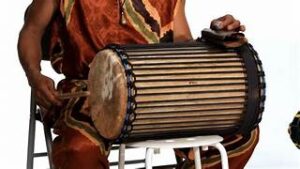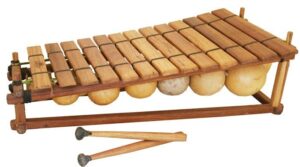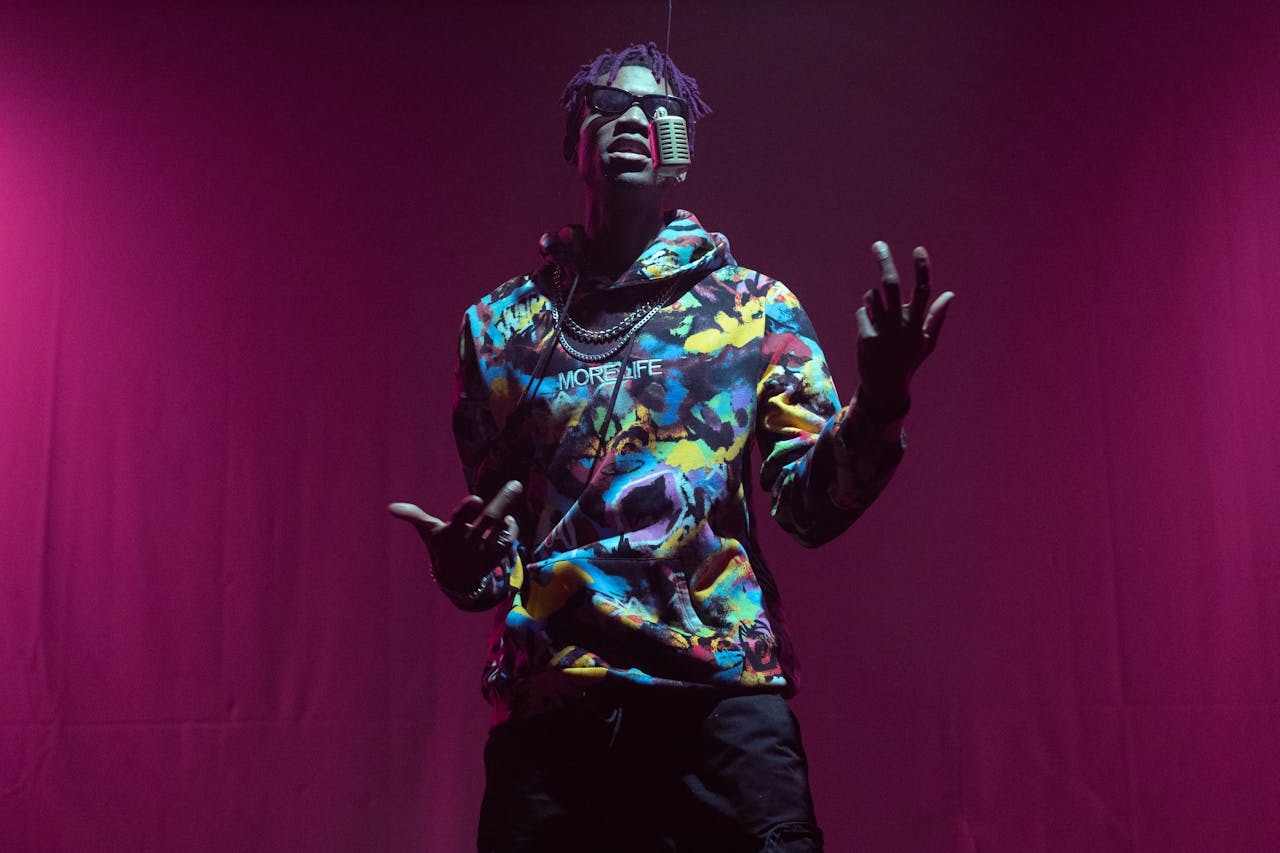Imagine the rhythmic pulse of Afrobeat music filling the air, captivating listeners around the world with its infectious energy. At the heart of this genre lie unique instruments that not only define its sound but also carry deep cultural significance. In this blog post, we’ve listed the key extraordinary instruments and uncovered their role in shaping the widespread popularity of Afrobeat music.
Talking Drum (Dundun)
 The Talking Drum, also known as Dundun, is a staple in Afrobeat music, renowned for its ability to mimic the intonations of human speech through varying pitches and tones. Its hourglass shape and leather heads allow the player to squeeze or release tension while striking the drum with a curved stick, producing a wide range of sounds. Traditionally used by West African griots to communicate messages across long distances, the Talking Drum carries cultural significance beyond its musical capabilities.
The Talking Drum, also known as Dundun, is a staple in Afrobeat music, renowned for its ability to mimic the intonations of human speech through varying pitches and tones. Its hourglass shape and leather heads allow the player to squeeze or release tension while striking the drum with a curved stick, producing a wide range of sounds. Traditionally used by West African griots to communicate messages across long distances, the Talking Drum carries cultural significance beyond its musical capabilities.
Shekere
The Shekere is a fascinating instrument commonly found in Afrobeat music. Its origins can be traced back to around West Africa, where it was traditionally made from dried gourds covered in beads or seeds. The unique sound of the Shekere comes from the intricate shaking and tapping movements used by musicians to create rhythmic patterns that add depth and texture to the music. It’s often played alongside drums and other percussion instruments, contributing to the vibrant and energetic sound of Afrobeat.
Agogô
The Agogô is a traditional instrument in Afrobeat music that adds layers of rhythm and depth to the sound. It consists of two or more cowbells attached to each other, creating a unique metallic tone when struck with a stick. With its clear and resonant sound, the Agogô plays a crucial role in driving the tempo and adding complexity to the music. Its distinct timbre cuts through the mix, ensuring that it stands out amidst other instruments. Derived from Yoruba culture in Nigeria, the Agogô has roots deeply intertwined with Afrobeat’s heritage. Its presence in performances brings an authentic touch that connects listeners to the genre’s rich history.
Kalimba
The Kalimba, also known as the thumb piano, is a small instrument that has had a big impact on Afrobeat music. Its delicate sound adds a unique texture to the genre’s rich tapestry of sounds. Originating from Africa, the Kalimba is played by plucking metal tines attached to a wooden sounding board. Its mesmerizing tones resonate beautifully and can transport listeners to another world. In Afrobeat music, the Kalimba often takes on a melodic role, providing intricate patterns that weave through the rhythm section. It creates an enchanting, magical vibrance that enhances the overall listening experience.
Balafon
 The Balafon, a traditional West African instrument, is an essential component of Afrobeat music. Made of wooden bars resting on gourds, it produces vibrant and melodic tones when struck with mallets. Its unique sound adds depth and rhythm to Afrobeat compositions, creating an unmistakable groove that sets the genre apart from others. Musicians often incorporate the Balafon in their performances to infuse authenticity and cultural significance into their music.
The Balafon, a traditional West African instrument, is an essential component of Afrobeat music. Made of wooden bars resting on gourds, it produces vibrant and melodic tones when struck with mallets. Its unique sound adds depth and rhythm to Afrobeat compositions, creating an unmistakable groove that sets the genre apart from others. Musicians often incorporate the Balafon in their performances to infuse authenticity and cultural significance into their music.
Final Thoughts
These instruments not only serve as tools for musical expression but also carry cultural significance, connecting listeners to the rich traditions and histories of Africa. As Afrobeat continues to captivate audiences around the world, these unique instruments will undoubtedly remain essential components in keeping the genre alive and thriving for generations to come.

